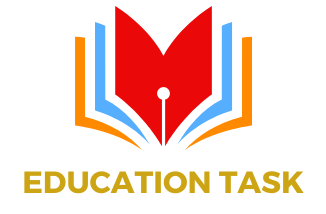Choosing the right math tutoring program for your child can be a pivotal decision in their educational journey. Mathnasium and Kumon are two of the most prominent names in math education, each offering unique methodologies and approaches to learning.
Kumon focuses on self-learning, repetition, and foundational skills with minimal instructor interaction. Mathnasium offers personalized, instructor-led sessions targeting understanding, school alignment, and confidence. Kumon emphasizes independence and discipline, while Mathnasium supports immediate school performance with tailored guidance.
In this article, we will explore the strengths and weaknesses of both programs to help you make an informed decision.
Mathnasium: Approach and Methodology
Mathnasium is a math-only learning center designed for students in grades K-12. The program focuses on helping children understand math in a way that makes sense to them. Here’s a detailed look at its approach:
Customized Learning Plans
Mathnasium provides personalized learning plans tailored to each child’s specific needs. This individualized approach allows students to progress at their own pace, ensuring they fully grasp concepts before moving on.
Tutors assess each student’s strengths and weaknesses through an initial diagnostic test, which helps identify areas requiring more attention.
Engaging Instructional Techniques
The Mathnasium method emphasizes active learning through hands-on activities and interactive lessons. Instructors use a variety of teaching tools, including visual aids and games, to engage students.
This approach not only makes learning enjoyable but also reinforces understanding and retention.
Focus on Conceptual Understanding
One of the core tenets of Mathnasium is fostering a deep conceptual understanding of mathematics. Students learn not just how to solve problems but also why certain methods work, which is crucial for mastering advanced topics.
This understanding helps students build confidence and tackle challenges more effectively.
Read Also: Top 7 Problem Solving Activities for Kindergarten
Kumon: Structure and Philosophy
Kumon is a global learning program that offers instruction in both math and reading. Founded in Japan, Kumon’s philosophy centers on self-learning, promoting independence and confidence in students. Here’s an overview of its structure:
Step-by-Step Progression
Kumon utilizes a step-by-step progression method. Students begin at a comfortable level and advance only when they have mastered the material.
This method ensures that each child builds a solid foundation before tackling more complex topics, making it suitable for students of all skill levels.
Focus on Independent Learning
Kumon encourages students to take responsibility for their own learning. The program emphasizes self-discipline and self-paced study, allowing children to work independently through worksheets and online resources.
This structure helps cultivate important skills like time management and problem-solving.
Regular Assessment and Feedback
Kumon places significant importance on regular assessment. Students take periodic tests to evaluate their progress and ensure they are on track.
Instructors provide feedback and adjust study plans accordingly, maintaining a balance between challenge and support.
Comparing Key Features: Mathnasium vs. Kumon
In order to better comprehend the distinctions between Kumon and Mathnasium, we shall contrast a number of important aspects of each program:
Curriculum Focus
Mathnasium: Exclusively focuses on mathematics. The curriculum is designed to enhance problem-solving skills and conceptual understanding, preparing students for advanced studies.
Kumon: Offers both math and reading programs. The curriculum is broad, aiming to improve overall academic performance while promoting independent learning.
Teaching Style
Mathnasium: Utilizes personalized instruction and interactive lessons. Instructors work closely with students to address specific learning gaps and boost confidence.
Kumon: Emphasizes self-learning through worksheets. While instructors are available for guidance, students are expected to work independently, fostering self-discipline.
Learning Environment
Mathnasium: Features a collaborative and supportive environment. Students often work in small groups, allowing for peer interaction and motivation.
Kumon: Promotes a more solitary learning environment, where students focus on their own work. This can be beneficial for fostering independence but may lack the collaborative aspect some students thrive on.
Cost Considerations
Mathnasium: Typically, Mathnasium centers have a higher hourly rate than Kumon. However, the individualized attention and tailored approach may justify the cost for some families.
Kumon: Generally, Kumon offers a more budget-friendly option. Monthly fees cover both math and reading, making it an appealing choice for parents looking for comprehensive educational support.
| Feature | Kumon | Mathnasium |
|---|---|---|
| Philosophy | Mastery through repetition | Understanding through guidance |
| Approach | Self-learning, worksheets | Instructor-led, personalized |
| Curriculum | Structured, global program | Flexible, school-aligned |
| Instructor Role | Limited guidance | High interaction |
| Homework | Daily worksheets | No mandatory homework |
| Cost | $150–$200 per subject/month | $250–$400 per month |
| Best For | Discipline and foundational skills | Immediate school support |
Check Also: Unschooling Vs Homeschooling: Choosing the Best Method for Your Child’s Education
Which Program is Right for Your Child?
Determining the best program for your child depends on several factors, including their learning style, current skill level, and specific academic needs.
When To Choose Mathnasium
- Struggling with Math: If your child finds math challenging or lacks confidence, Mathnasium’s personalized attention and engaging methods can provide the support they need.
- Deep knowledge Desire: For students who benefit from a conceptual understanding of math, Mathnasium’s approach can be more effective in helping them grasp complex concepts.
- Collaborative Learners: Children who thrive in group settings may enjoy the collaborative environment at Mathnasium.
When To Choose Kumon
- Independent Learners: If your child is self-motivated and enjoys working independently, Kumon’s self-paced approach can foster their learning style.
- Comprehensive Academic Support: For parents seeking both math and reading support, Kumon offers a holistic program that addresses multiple subjects.
- Budget-Conscious Families: If cost is a significant concern, Kumon may be the more affordable option while still providing effective learning support.
Final Thoughts
Both Mathnasium and Kumon offer unique approaches to math education. The decision ultimately hinges on your child’s learning preferences and educational needs.
You may choose a program that will help your child succeed academically by being aware of its advantages and disadvantages.



